Introduction
Dive into the heart of one of the world’s oldest urban civilizations, the Indus Valley Civilization, which thrived over 4,000 years ago in the region that is now modern-day Pakistan and northwestern India. Discover the remarkable achievements in social practices, architecture, and urban planning that set Harappa and Mohenjo-Daro apart as the crowning jewels of this ancient civilization.
Harappa: The Architectural Marvel of the Indus Valley Civilization
The Architectural Marvel of Indus Valley Civilization
- City Planning: Explore how Harappa was meticulously designed with a grid pattern of streets, showcasing an advanced level of urban planning.
- Innovative Building Techniques: Delve into the construction methods, highlighting the use of both baked and sun-dried bricks, which exemplified the architectural ingenuity of the time.
City Planning of this Indus Valley Civilization
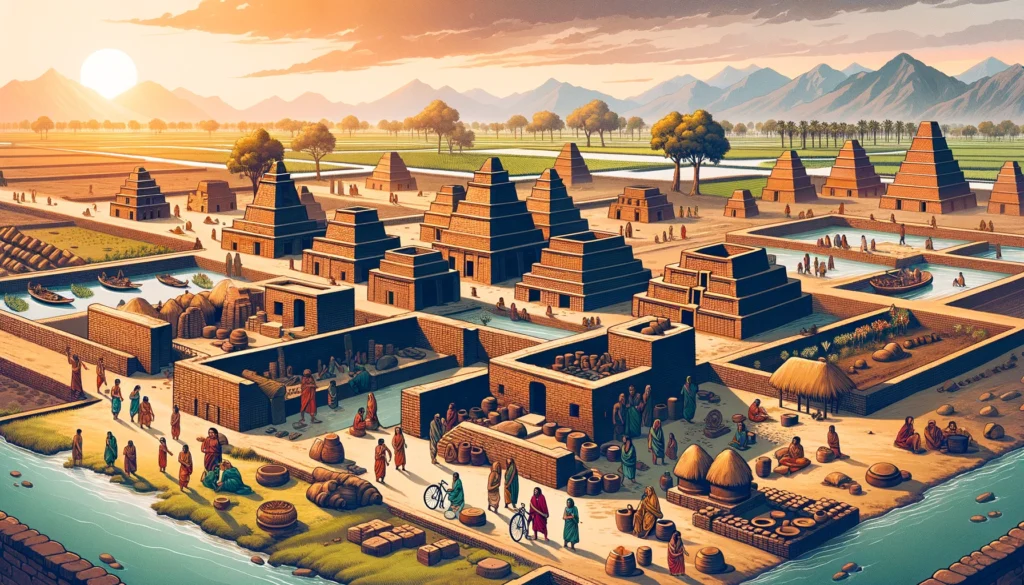

The city planning of Harappa, a prominent urban center within the Indus Valley Civilization, stands as a testament to the advanced urban architectural strategies of ancient times. This city was meticulously laid out in a grid pattern, a hallmark of thoughtful urban planning that facilitated efficient movement, trade, and communication among its inhabitants. The grid system not only reflects the civilization’s organizational skills but also its foresight in creating a structured living space that could accommodate the complex needs of its population. The streets were aligned with cardinal points, ensuring ease of navigation and optimal utilization of space. This level of planning underscores the Indus Valley Civilization’s deep understanding of urban design principles, making it a pioneering force in the realm of ancient city planning.
Innovative Building Techniques in the Indus Valley Civilization
The architectural ingenuity of the Indus Valley Civilization is further exemplified in the construction techniques employed in Harappa. The use of both baked and sun-dried bricks as primary building materials was a significant advancement in construction technology at the time. Baked bricks, known for their durability and strength, were likely used in structures that required more stability, such as public buildings and city walls. Sun-dried bricks, on the other hand, were more economical and used in residential constructions. This dual approach to building materials showcases the civilization’s adaptability and resourcefulness in architecture.
The uniformity in brick size and the standardized construction norms across the Indus Valley Civilization indicate a high level of architectural planning and regulatory practices. This standardization facilitated the construction of large-scale urban projects, including sophisticated drainage systems and granaries, further highlighting the civilization’s advanced architectural prowess.
The architectural marvels of the Indus Valley Civilization, particularly evident in Harappa’s city planning and building techniques, reflect a profound understanding of urban design, engineering, and sustainability. These ancient practices laid the groundwork for future urban developments and continue to inspire modern architecture and city planning. The legacy of the Indus Valley Civilization’s architectural ingenuity remains a subject of admiration and study among historians, architects, and scholars worldwide, underscoring its enduring impact on the evolution of urban landscapes.
Economic Prosperity Through Trade
- Trade Networks: Unravel the extensive trade routes that connected Harappa with distant civilizations like Mesopotamia, facilitated by its strategic location along the Indus River.
- Commodities and Craftsmanship: Discover the diverse range of goods traded, from luxury items like jewelry to everyday essentials, underscoring the economic vitality of Harappa.
Trade Networks
The Indus Valley Civilization, particularly its city Harappa, was at the heart of an intricate web of trade routes that stretched across continents, connecting it with distant civilizations such as Mesopotamia, Egypt, and possibly even the Aegean. This extensive network was largely facilitated by Harappa’s strategic location along the fertile banks of the Indus River, serving as a vital artery for transportation and communication. The river not only supported the agricultural base of the civilization but also enabled the movement of goods and ideas, contributing significantly to the economic prosperity of the region.
Maritime trade was another pivotal aspect of the Indus Valley Civilization’s trade networks, with evidence suggesting that they had developed sophisticated seafaring technology, allowing them to engage in trade expeditions to the Persian Gulf and beyond. This ability to navigate vast distances by sea underscores the advanced navigational skills and the entrepreneurial spirit of the Indus people, positioning them as key players in the ancient world’s trade dynamics.
Commodities and Craftsmanship
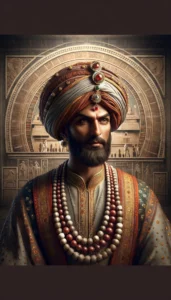

The economic vitality of Harappa, a central urban locale within the Indus Valley Civilization, was significantly bolstered by the diversity and quality of its trade commodities. The civilization was renowned for its craftsmanship in a variety of materials, including metals, precious stones, and ceramics. Among the luxury items that were highly sought after in distant lands were beautifully crafted beads, intricate jewelry made of gold and semi-precious stones, and fine pottery that bore the distinct artistic signature of the Indus artisans.
Moreover, Harappa’s craftsmen excelled in the production of utilitarian items such as tools, weapons, and household items, which were essential for daily life and also formed a significant part of the trade inventory. The standardized weights and measures discovered in the ruins of Harappa suggest a sophisticated system of trade and commerce, which facilitated dealings with distant partners and contributed to the economic stability of the civilization.
The trade of agricultural produce also played a crucial role in Harappa’s economy. The fertile Indus Valley supported the cultivation of a variety of crops, which not only sustained the local population but also supplied surplus produce that was traded for goods and raw materials not available locally. This exchange of commodities was instrumental in fostering economic growth and intercultural interactions, making the Indus Valley Civilization a key contributor to the ancient economic landscape.
The economic framework of the Indus Valley Civilization, with Harappa as a focal point, was a testament to the civilization’s advanced understanding of trade, commerce, and craftsmanship. The extensive trade networks and the diversity of traded goods highlight the civilization’s capacity for innovation, adaptability, and engagement with the global trade systems of the time. The legacy of the Indus Valley Civilization’s trade practices continues to be a subject of fascination and study, offering insights into the complex economic interactions of ancient civilizations.
Cultural Richness and Script Mystery
- Artistic Expressions: Appreciate the sophisticated culture through its art, pottery, and jewelry, reflecting the aesthetic sensibilities of its people.
- Undeciphered Scripts: Probe into the intriguing seals and scripts that remain a puzzle, hinting at a complex system of communication or record-keeping.
Artistic Expressions
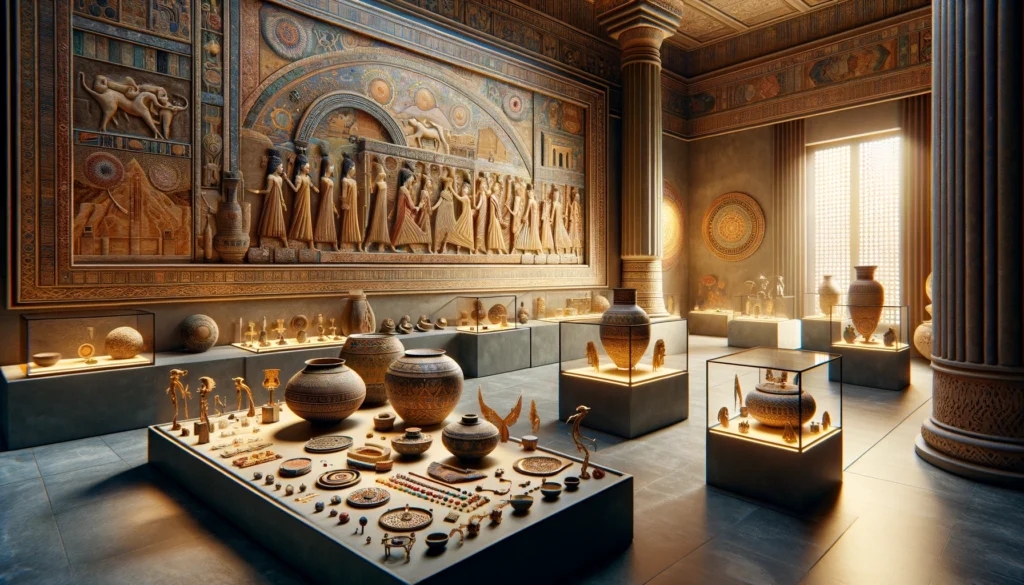

The Indus Valley Civilization, renowned for its urban planning and architectural prowess, also boasted a rich cultural tapestry as evidenced by its art, pottery, and jewelry. The artistic expressions from this civilization reflect a sophisticated culture with a keen eye for aesthetics and detail. Pottery from the Indus Valley is notable for its functional beauty, often adorned with geometric patterns and motifs inspired by nature, indicating a harmonious blend of utility and artistry. Similarly, the jewelry, crafted from gold, silver, and semi-precious stones, showcases the advanced metallurgical skills and the refined tastes of the Indus people. These artistic creations not only served decorative purposes but also held significant social and cultural value, possibly indicating the status and identity of the wearer.
Undeciphered Scripts
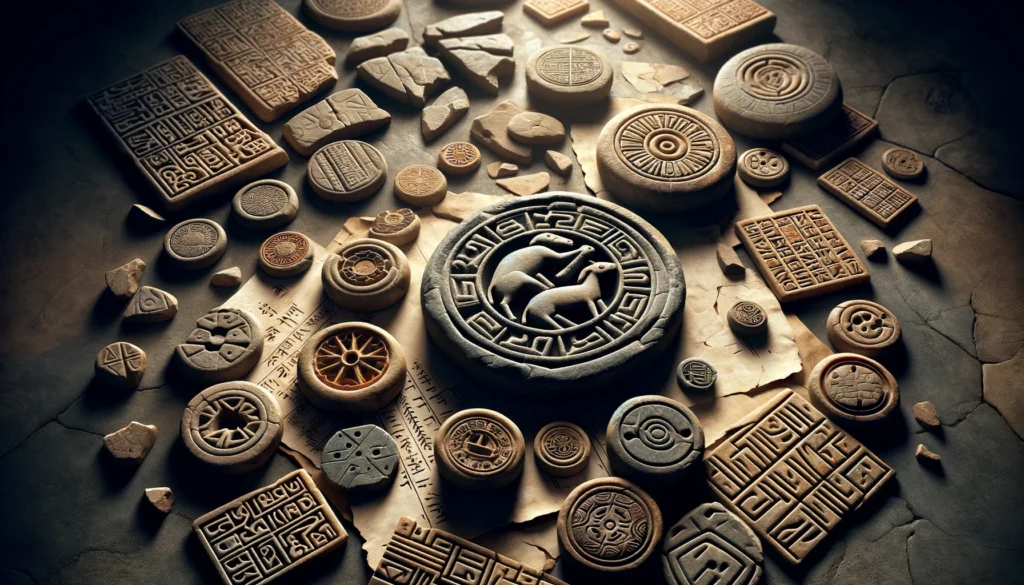

One of the most intriguing aspects of the Indus Valley Civilization is its script, which remains undeciphered to this day. The script, found on various seals and pottery, consists of symbols that suggest a complex system of communication and record-keeping. These seals, often bearing animal motifs and pictographs, hint at a rich underlying mythology or administrative system. The inability to decode the script has left a significant gap in our understanding of the Indus Valley Civilization’s societal structure, religious beliefs, and daily life. The mystery surrounding the script continues to challenge linguists and historians, making it a fascinating subject of study that could unlock new perspectives on this ancient civilization.
The cultural richness and the enigmatic script of the Indus Valley Civilization highlight the depth and complexity of this ancient society. The artistry and the undeciphered script together paint a picture of a civilization that was not only advanced in terms of infrastructure and trade but also rich in culture and possibly sophisticated in its system of communication.
Mohenjo-Daro: The Apex of Urban Sophistication in the Indus Valley Civilization
Urban Planning and Social Hierarchy in Mohenjo-Daro
- City Layout: Investigate the city’s division into the Citadel and the Lower City, each possibly serving distinct administrative or religious functions.
- Public Amenities and Bathing Facilities: Marvel at the advanced public amenities, including the Great Bath, which suggests a highly organized society with social rituals.
City Layout of Mohenjo-Daro
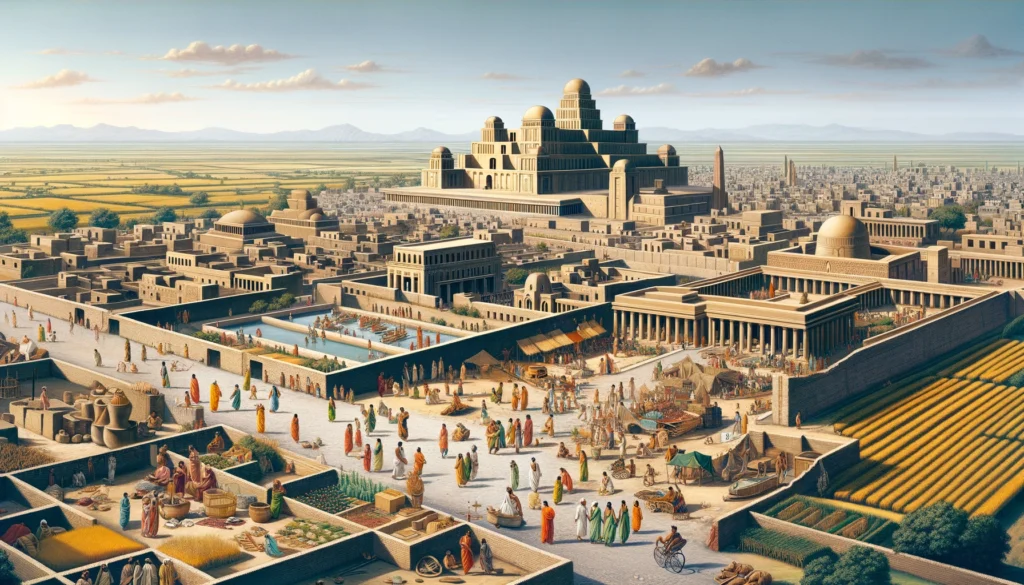

Mohenjo-Daro, one of the most prominent archaeological sites of the Indus Valley Civilization, showcases an exceptional example of ancient urban planning. The city was strategically divided into two main areas: the Citadel and the Lower City. The Citadel, situated on a raised platform, is believed to have served as the center of administrative or religious activities, housing structures that appear to have been used for public gatherings, religious ceremonies, or administrative purposes. In contrast, the Lower City was laid out in a grid-like pattern, indicative of residential and commercial spaces. This clear division suggests a sophisticated understanding of urban zoning and possibly a defined social hierarchy, with the Citadel likely being the hub for the elite or ruling class, while the Lower City catered to the general populace.
Public Amenities and Bathing Facilities
Mohenjo-Daro was remarkable not just for its structured layout but also for its advanced public amenities, epitomized by the Great Bath. This large, watertight pool was likely used for ritual bathing, indicating a society with complex social rituals and a focus on cleanliness and purification. The presence of elaborate drainage systems and public wells further underscores the high level of organization and the importance of water management in the city. These amenities reflect the Indus Valley Civilization’s prioritization of public health and communal well-being, hallmarks of a highly organized and socially advanced society.
The urban planning and social structures of Mohenjo-Daro offer fascinating insights into the Indus Valley Civilization’s way of life, highlighting a society that was not only architecturally advanced but also deeply social, with a keen emphasis on community and ritual.
Trading Hub and Cultural Nexus
- Trade and Economy: Examine Mohenjo-Daro’s role as a vital trade center, with evidence of goods from as far as the Persian Gulf and Mesopotamia.
- Cultural Artifacts: Explore the rich tapestry of life through unearthed artifacts, revealing a society that values craftsmanship and trade.
Trade and Economy
Mohenjo-Daro, a jewel of the Indus Valley Civilization, flourished as a crucial trade center, connecting the Indian subcontinent with the broader ancient world. Its strategic position along the Indus River facilitated trade routes that extended to the Persian Gulf and Mesopotamia, turning it into a bustling hub of economic activity. Archaeological findings, including a variety of seals, jewelry, and pottery, suggest a thriving trade in luxury and everyday goods, highlighting Mohenjo-Daro’s significance in the ancient trade networks. The city’s economy was bolstered by its artisans’ and traders’ proficiency, making it a pivotal point for cultural and commercial exchanges that shaped the region’s prosperity.
Cultural Artifacts
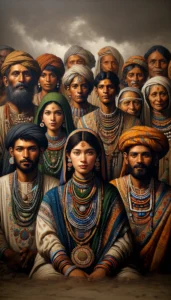

The excavation of Mohenjo-Daro has unveiled a rich tapestry of cultural artifacts that narrate the life and times of its inhabitants. These artifacts, ranging from intricate beadwork and pottery to sophisticated urban planning tools, reflect a society that deeply valued craftsmanship, trade, and aesthetics. The craftsmanship evident in these findings points to a culture that was not only economically prosperous but also rich in artistic expression. The artifacts serve as a testament to Mohenjo-Daro’s role as a cultural nexus, where artistic and commercial endeavors intertwined, contributing to the vibrant tapestry of the Indus Valley Civilization.
The Mysterious Decline
- Theories of Collapse: Delve into the various theories surrounding the decline of these cities around 1900 BCE, from environmental shifts to economic downturns.
Legacy and Influence
- Architectural Innovations: Reflect on how the urban planning and architectural practices of the Indus Valley Civilization have influenced modern urban design.
- Cultural Impact: Consider the lasting impact of this civilization’s trade practices, craftsmanship, and societal organization on the Indian subcontinent and beyond.
Architectural Innovations
The urban planning and architectural achievements of the Indus Valley Civilization, exemplified by cities like Mohenjo-Daro, have left a lasting imprint on modern urban design. The civilization’s advanced grid-based city layout, sophisticated drainage systems, and the use of standardized building materials reflect an early understanding of urban sustainability and efficiency. These practices have influenced contemporary urban planning principles, advocating for organized city layouts, efficient water management, and sustainable construction practices. The architectural innovations of the Indus Valley Civilization serve as a testament to their forward-thinking approach, which continues to inspire modern architects and urban planners in creating resilient and livable cities.
Cultural Impact
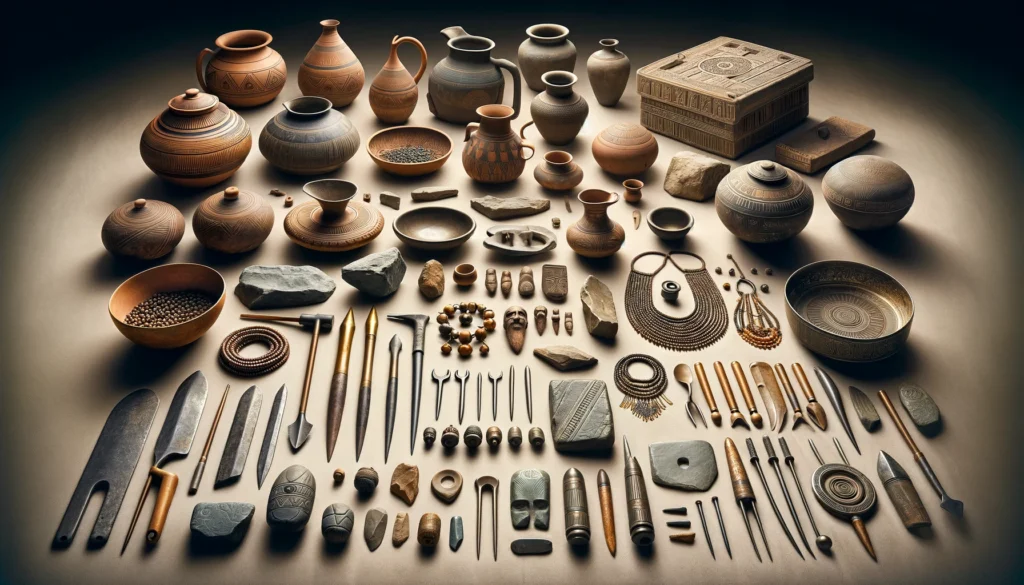

The trade practices, craftsmanship, and societal organization of the Indus Valley Civilization have had a profound impact on the cultural and economic development of the Indian subcontinent and beyond. The extensive trade networks established by this civilization facilitated cultural exchanges and economic interactions that shaped the region’s history. The craftsmanship and artistic expressions of the Indus people, seen in their pottery, jewelry, and urban artifacts, have influenced subsequent cultural developments, showcasing the civilization’s sophisticated aesthetic sensibilities. The societal organization of the Indus Valley Civilization, with its emphasis on urban planning and public welfare, has contributed to the evolution of societal structures in the region, underscoring the civilization’s lasting legacy on human development.
Frequently Asked Questions (FAQs) about the Indus Valley Civilization
What is the Indus Valley Civilization known for?
The Indus Valley Civilization, flourishing around 2500 BCE, is renowned for its advanced urban planning, architectural innovations, and complex societal structure. Cities like Harappa and Mohenjo-Daro were marvels of their time, with well-organized grid patterns, sophisticated drainage systems, and impressive public buildings. This civilization is also celebrated for its extensive trade networks, craftsmanship in pottery, beads, and seals, and a still undeciphered script that continues to intrigue scholars and historians.
How did the Indus Valley Civilization start and end?
The Indus Valley Civilization began around 3300 BCE, initially as small, agricultural communities that gradually evolved into complex urban centers. Its zenith was reached from 2600 BCE to 1900 BCE. The decline of this civilization around 1900 BCE remains a subject of debate among scholars, with theories suggesting environmental changes, declining trade, and possible invasions as contributing factors. By around 1300 BCE, most of the cities were abandoned, marking the end of this enigmatic civilization.
What was the Indus Valley Civilization in Pakistan?
In present-day Pakistan, the Indus Valley Civilization was a Bronze Age civilization that encompassed significant areas, including major urban centers like Harappa (in Punjab) and Mohenjo-Daro (in Sindh). These sites, among others, showcase the civilization’s remarkable achievements in urban design, trade, and social organization, contributing significantly to our understanding of ancient South Asian cultures.
What is the Indus Valley in history?
In history, the Indus Valley refers to a region in South Asia that was home to one of the world’s earliest major urban civilizations, alongside those of ancient Egypt and Mesopotamia. It is named after the Indus River, around which the civilization’s major cities were located. The Indus Valley Civilization is a testament to the ingenuity of its people, their mastery of city-building, and their contributions to cultural and technological advancements that have had a lasting impact on subsequent cultures and societies in the region.
Conclusion
Revisit the significance of Harappa and Mohenjo-Daro in the broader narrative of human civilization, emphasizing their contributions to urban planning, trade, and culture. Invite readers to ponder the mysteries that remain and the lessons we can learn from this ancient civilization.
View this post on Instagram
We are TrulyPakistan


4 thoughts on “Indus Valley Civilization: Harappa and Mohenjo-Daro”